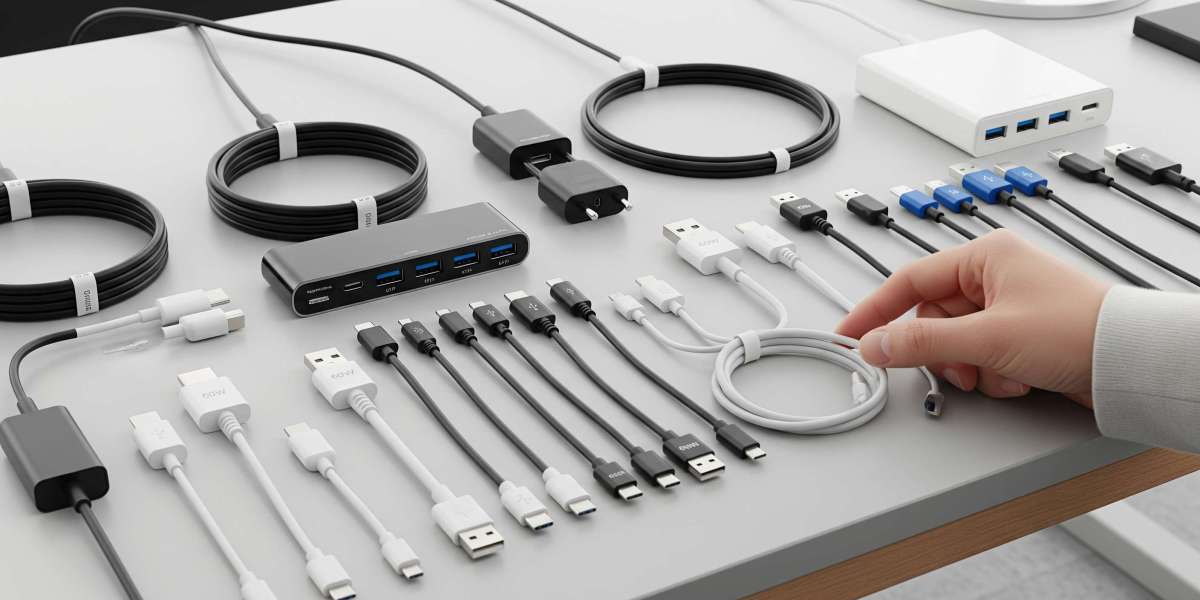If you’ve ever noticed different USB cables and wondered, "Can I plug a USB 3.0 cable into a regular USB port?" you’re not alone. Many people get confused by all the USB types and versions. Let’s clear things up simply so you’ll never guess wrong when connecting your devices.
What Is a Standard USB Cable?
A standard USB cable usually means the common USB 2.0 cable many devices use. It has a typical rectangular USB-A plug. This cable connects devices to computers, chargers, or other electronics for charging or data transfer. Older USB cables like USB 2.0 have four wires inside and transfer data at up to 480 Mbps (megabits per second).
What Is USB 3.0?
USB 3.0 is a newer, faster version of USB technology. It’s designed to move data much quicker—up to 5 Gbps (gigabits per second), which is about 10 times faster than USB 2.0. USB 3.0 cables often have a blue part inside the plug to help you tell them apart.
Besides speed, USB 3.0 can handle more power, which means faster charging for your devices. These cables usually have more wires inside (nine instead of four) to handle the extra data and power.
The Exact Answer: Can You Plug a USB 3.0 Into a Normal USB?
Yes, you can plug a USB 3.0 cable into a normal USB port (like USB 2.0), but it will work at the slower speed of the port.
The USB 3.0 cable is compatible with USB 2.0 ports because the USB design is backward compatible. That means your devices will still connect and charge, but data transfer speeds will slow down to the maximum speed of the older USB port.
How USB 3.0 and Normal USB Are Compatible?
USB 3.0 ports and cables were made to fit old USB ports. The USB-A plug shape stays the same, so you can connect a USB 3.0 cable into a USB 2.0 port easily. Your device will work just fine, but without the speed improvements that USB 3.0 offers.
This backward compatibility is great because you don’t need all new devices or cables at once. You can upgrade gradually.
What Happens When You Use a USB 3.0 Cable on a USB 2.0 Port?
Your device will connect and charge normally.
Data transfer will happen, but at USB 2.0 speeds (up to 480 Mbps instead of 5 Gbps).
You won’t get the super-fast transfer that USB 3.0 promises.
That may feel slower if you transfer big files like videos or large photos.
What If You Plug a USB 2.0 Cable Into a USB 3.0 Port?
You can and it works, but the speed will be limited to USB 2.0 levels, because the cable itself supports only the slower standard.
How to Tell the Difference Between USB 2.0 and USB 3.0 Cables?
USB 3.0 cables usually have a blue plastic part inside the connector.
USB 2.0 cables typically have black or white inside.
USB 3.0 cables might be thicker because they have more wires.
Sometimes, USB 3.0 plugs are labeled “SS” for SuperSpeed.
Why Use USB 3.0 If It Works With Older USB?
The main reason is speed. USB 3.0 can transfer data much faster, which saves time when sending big files or backing up your device. It also delivers more power for faster charging.
Using USB 3.0 cables and ports together gives you the best performance.
What Are the Limits of a Standard USB Cable?
Standard USB 2.0 cables have:
Slower speeds (up to 480 Mbps).
Less power delivery (up to 500 mA).
Less efficient power management.
This is fine for many everyday tasks like charging phones or moving small files. But for power-hungry devices or fast data, USB 3.0 is better.
Practical Tips When Using USB Cables
Use a USB 3.0 cable with a USB 3.0 port for the fastest speeds.
If you only have USB 2.0 ports, a USB 3.0 cable still works but won’t speed things up.
Keep your cables clean and undamaged to avoid connection problems.
If possible, buy cables and devices from trusted sellers to ensure quality.
Fun Facts About USB
USB 3.0 was introduced in 2008 and became widely used around 2012.
USB 3.1 and USB 3.2 are newer versions with even faster speeds.
USB cables come in many shapes like USB-A, USB-B, USB-C, but USB-A is the most common.
Summary
You can plug a USB 3.0 cable into a normal USB port easily. It will charge your device and transfer data, but will only work at the speed of the older USB port. This backward compatibility lets you use new cables without replacing all your old ports immediately.
Sources: https://vekloy.com/how-to-choose-the-right-usb-cable
https://www.promoteproject.com/article/197642/does-quality-of-usb-cable-matter
https://sharefolks.com/view/what-to-look-for-when-buying-a-usb-cable



